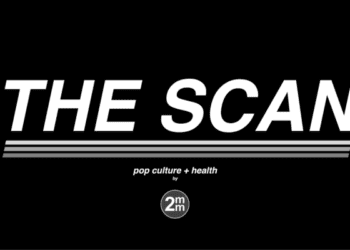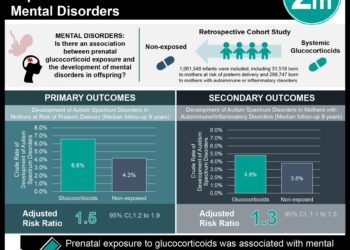The Scan by 2 Minute Medicine®: Maternity Leave Left Out, Dry January, A Measles Resurgence, Dr. GPT
2-7-2023
The Scan by 2 Minute Medicine® is a pop-culture medical newsletter and exclusive benefit for 2 Minute Medicine Plus subscribers.
Maternity Leave Left Out
The Story: Maternity leave for athletes has been on full display over the past few weeks after professional soccer player Sara Björk released a piece on The Players’ Tribune about her tumultuous endeavors with her former soccer club during her pregnancy. While topics such as training during pregnancy and breastfeeding as an athlete, have been highlighted because of the article, few issues have been more apparent than that of mandated paid maternity leave.
Paid Maternity Leave
Although moderate physical activity is recommended in uncomplicated pregnancies, according to the health guidelines of several countries, pregnant athletes often face unique challenges. Regular follow-up with a physician is needed to make sure that activity levels are safe in elite athletes during pregnancy. Although some athletes are successful in training with their teams long into pregnancy, for some athletes, risk of injury, or symptoms such as morning sickness have a significant impact on athletic performance. Björk found that morning sickness was a limiting factor in her training, and eventually led to her decision to step away from team training during her pregnancy. That’s when she stopped receiving her regular payments. However, it isn’t just athletes who face this struggle of missed paychecks and financial insecurity during pregnancy. In fact, estimates suggest that only around 20% of American workers have paid leave following a pregnancy. This is because, among wealthy countries, the United States sits near the bottom when it comes to maternity leave– with no nationally mandated paid leave. Although some employers may provide paid maternity leave, the lack of a national mandate means that many new mothers do not have access to these benefits.
The Issue
Paid maternity leave is not only important for financial security, but also has been shown to impact maternal and fetal outcomes. In an assessment of women in the United States, those who had paid maternity leave had significantly decreased risks of re-hospitalization for both themselves and their infants, compared to those who had unpaid or no leave. Paid maternity leave has also been associated with improved mental health outcomes, such as reduced post-partum depression and improved infant attachment, as well as physical health outcomes, such as decreased infant mortality, increased infant immunization, and improvements in breastfeeding. In a country where maternal morbidity costs are estimated at $32.3 billion per year and where infant mortality ranks near the worst among OECD countries, one must question whether paid maternity leave could play a part in improving these outcomes.
Dry January
For many, January is a time to go dry– that is, passing up on alcoholic beverages for the month. But the recent changes in Canada’s drinking guidelines may have people thinking they should continue the trend year-round. Previous safe drinking guidelines in Canada advised 10 or fewer drinks per week for women and 15 or fewer drinks per week for men. However, the new guidelines suggest a drastic reduction, stating that 2 or fewer drinks per week places a person at low risk of adverse health outcomes, while 3-6 drinks is associated with moderate risk, and 7 or more drinks highly increase risk. The guidelines also suggest not having more than 2 drinks in a given day.
The updates to the drinking guidelines come because of further evidence regarding the dangers of moderate to heavy drinking. Particularly it was found that drinking increases the risk of seven types of cancer, including breast, colorectal, liver, and pancreatic cancer. In fact, recent estimates suggested that over 4% of all new cases of cancer globally in 2020 could be attributed to alcohol consumption. Alcohol consumption has been associated with several other chronic diseases as well, including diabetes mellitus, heart disease, stroke, cirrhosis, mental health disorders, and more. The topic of alcohol consumption has become increasingly important lately, as COVID-19 lockdowns have been reported to be associated with increases in alcohol-related emergencies and heavy drinking. Meanwhile, the immunosuppressive effects of alcohol have also been noted to increase the risk of COVID-19 infection in heavy drinkers. Whether it be for Dry January, protecting yourself from cancer, or reducing your risk of COVID-19, when it comes to drinking, less is more.
A Measles Resurgence
Around the world, measles cases have been on the rise. Near the end of 2022, measles rates in India surpassed 12,000, and unfortunately contributed to the country’s failure to achieve their goal of eradicating the disease by 2023. The United States has not been immune to this resurgence, with an outbreak in Ohio affecting more than 80 children. One of the most prominent factors leading to the measles resurgence is a decrease in vaccination rates. During the COVID-19 pandemic, millions of measles immunizations were missed and, as a result, childhood vaccination rates against the disease have dropped. Given the highly contagious nature of measles, vaccination rates need to be near or over 90% in order to achieve herd immunity. Global estimates suggest that current vaccination rates have fallen below this threshold. Discussions of vaccine hesitancy amid the COVID-19 pandemic may also play a role in future measles vaccination rates. Although the revival of measles spread has been a cause for concern, hopefully, it will shine a light on the need for increased vaccination rates.
Dr. GPT
In November of 2022, the world was in awe at the release of ChatGPT– an AI-powered chat tool. While many started off enjoying the chatbot’s functions, from writing songs to answering your most random questions, many are starting to wonder how the tool will change the future of medicine. After all, the chatbot scored a passing grade on the United States Medical Licensing Exam and has been credited as an author on peer-reviewed papers. Many have pointed to the potential benefits of ChatGPT in the field of medicine, including synthesizing new medical knowledge, providing quick answers to broad questions, and even composing short medical summaries. However, it is important to note the drawbacks that exist with AI in medicine, such as confidentiality concerns with regards to patient data and risks of incorrect information. The world is still learning how to harness such powerful technology but there is no doubt that innovations like ChatGPT will make waves in the medical community, one way or another.
©2023 2 Minute Medicine, Inc. All rights reserved. No works may be reproduced without expressed written consent from 2 Minute Medicine, Inc. Inquire about licensing here. No article should be construed as medical advice and is not intended as such by the authors or by 2 Minute Medicine, Inc







